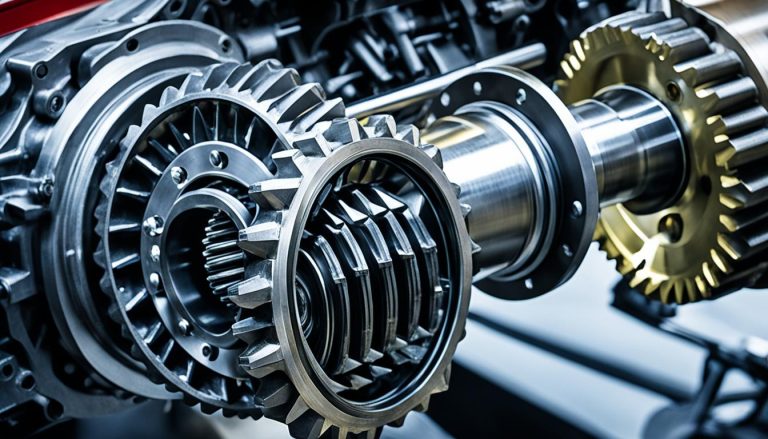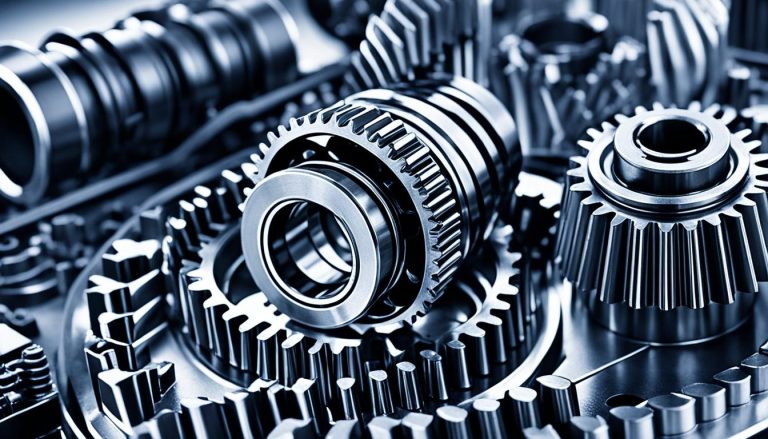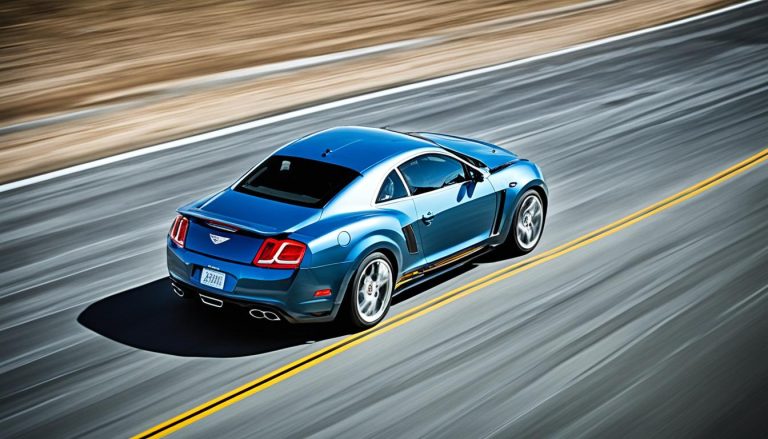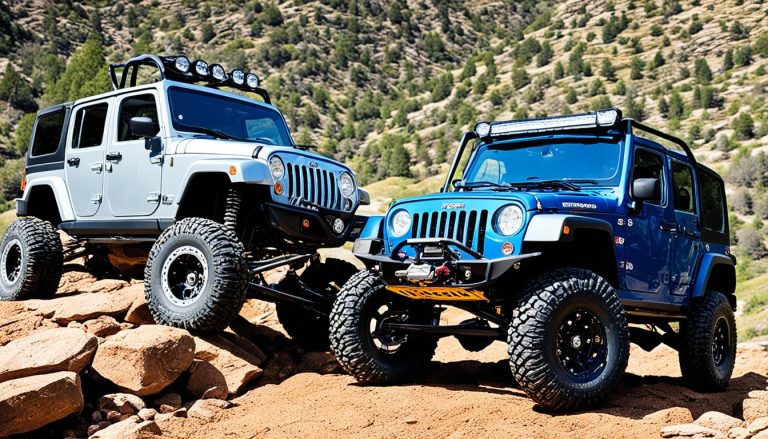Convert Open Differential to Limited Slip Easily
Have you ever felt your car struggling for traction on a wet road or during a sharp turn? Upgrading from an open differential to a limited slip differential might just be the performance enhancement your vehicle needs. But is it really that simple to convert an open differential? Many gearheads have debated the feasibility and the effects it would have on insurance coverage. The truth is, a differential upgrade can not only improve your car’s handling and control but also maintain insurability, as it’s a factory option in many cars.
While some enthusiasts may think that this modification could break the bank, there are cost-effective routes worth considering. For instance, an axle swap can actually be a more affordable option. Whether you’re consulting with a specialized 4X4 shop or considering a DIY project, we’ll navigate through the ways to successfully achieve this upgrade without the worry of insurance fallbacks.
Imagine the confidence you’ll gain as your vehicle maintains consistent power and superior grip on those less forgiving surfaces. So let’s delve into how to reap the benefits of improved performance by learning to convert an open differential to a steadfast limited slip differential.
Key Takeaways
- Discover the benefits of upgrading to a limited slip differential for enhanced traction.
- Learn why converting an open differential is a worthwhile investment for vehicle performance.
- Understand the cost-effectiveness of a differential upgrade through options like an axle swap.
- Find out why insurance companies typically cover vehicles with limited slip differential installations.
- Gain insights into the conversion process and how to approach it, whether DIY or professionally.
Understanding the Basics of Open Differential and Limited Slip Conversion
If you’re curious about the difference between an open differential and a limited slip differential (LSD), as well as the conversion process, you’re not alone. Understanding the mechanics can help you decide whether a differential modification is right for your vehicle. Let’s dive into what each of these components does and how they affect your driving experience.
What is an Open Differential?
An open differential is a common component in most vehicles, allowing two wheels on an axle to rotate at different speeds. This is particularly useful when you take turns, as the inner wheel needs to rotate slower than the outer wheel. However, it does have a downside – it’s not the best for traction when one wheel is on a slippery surface.
Benefits of Upgrading to a Limited Slip Differential
Adding a limited slip differential to your vehicle has substantial benefits, especially when considering traction and stability. An LSD ensures that when one wheel starts to slip, more torque is delivered to the wheel with more grip. This can transform your driving experience, improving handling, and offering better control on tricky surfaces where an open differential might falter.
Dispelling Myths Around Differential Conversion
Despite some misconceptions, converting from an open differential to limited slip is indeed feasible. This process doesn’t typically void insurance coverage, although it’s always a good practice to inform your provider of any significant modifications. Obtaining the necessary parts can be done through salvage yards, dealerships, or aftermarket suppliers, depending on your preference.
The conversion is highly beneficial for anyone looking to improve their vehicle’s performance on low-traction surfaces such as wet or icy roads. By balancing the need for differential wheel speeds during turning with the requirement for better traction during straight-line driving or poor road conditions, LSDs provide a significant advantage over the traditional open differential setup.
Here’s a breakdown of the key differences and benefits when considering how to convert open differential to limited slip:
| Aspect | Open Differential | Limited Slip Differential |
|---|---|---|
| Primary Function | Allows wheels to rotate at different speeds | Reduces wheel spin by allocating torque to the gripping wheel |
| Benefit in Traction | Limited, may result in wheel spin under low traction | Significant improvement on low-friction surfaces |
| Conversion Feasibility | Standard in most vehicles | Doable with appropriate parts and expertise |
| Handling Characteristics | May be compromised under uneven traction | Enhanced, especially in adverse road conditions |
In conclusion, understanding what an open differential and a limited slip differential are, the benefits of converting, and how to approach the process are crucial steps for any auto enthusiast considering this upgrade. A well-informed decision can lead to improved vehicle performance and a more enjoyable driving experience.
Is Your Vehicle a Good Candidate for Differential Upgrade?
Are you considering a differential upgrade for better performance on the road? Not all vehicles will benefit equally from installing an open differential conversion kit. Factors such as your car’s make and model, and your driving environment are crucial in deciding whether to convert your car differential.
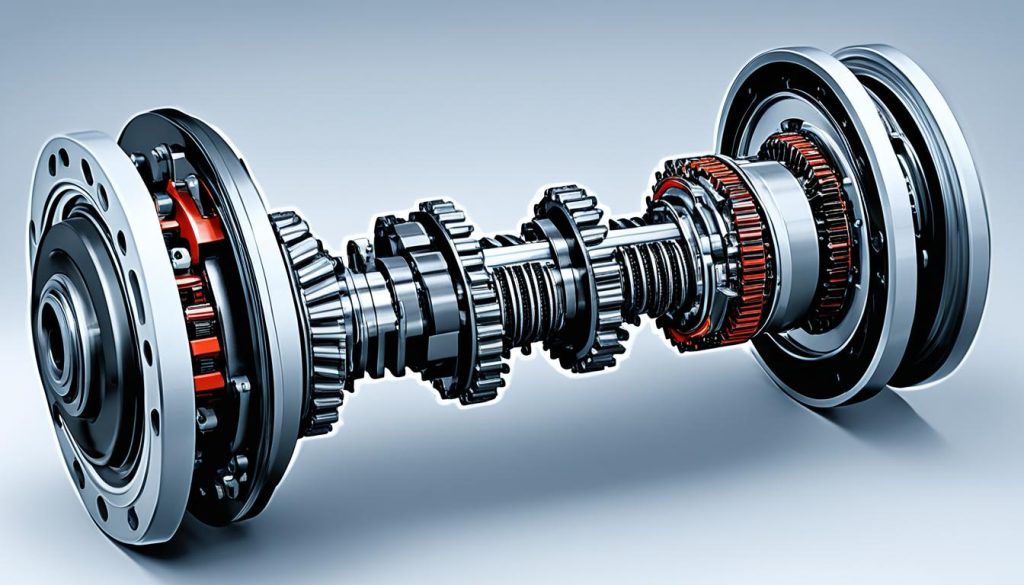
For instance, if you own a vehicle that often wrestles with rough terrain or you enjoy the sporadic off-road adventure, a differential upgrade could significantly improve your experience. Moreover, if your daily route includes areas with inclement weather conditions, the added traction from an upgraded differential could mean a world of difference in terms of safety and control.
- Do you drive a car that is prone to performance issues due to the current open differential?
- Are you looking to enhance the handling capabilities for activities like track racing or off-roading?
- Do trusted parts suppliers and 4X4 shops advocate for an upgrade suitable for your car model?
For performance-oriented vehicles such as a 2013 Ram 2500 2WD, upgrading to a limited-slip differential can resolve many of these performance limitations. It’s important to note that with the expertise provided by seasoned professionals from 4X4 shops, differential upgrades can be a viable option for most modern vehicles, leading to a more enjoyable and reliable driving experience. It’s not just about transforming your car; it’s about tailoring it to your unique driving needs and style.
Before making any decisions… consider consulting with a specialist to evaluate your vehicle’s specific requirements. Keep in mind, an open differential conversion kit can offer a cost-effective solution to a common problem that many car enthusiasts face. However, ensure that this is the right upgrade for you by seeking professional advice and considering all factors involved. Enhance your driving experience by making an informed choice about your differential.
Convert Open Differential to Limited Slip
If you’re seeking improved traction and more predictable vehicle handling, particularly in challenging driving scenarios, a limited slip differential conversion could be an essential upgrade for your vehicle. Before diving into the details of converting your open differential to a limited slip system, it’s important to understand the components and steps that will make your conversion successful.
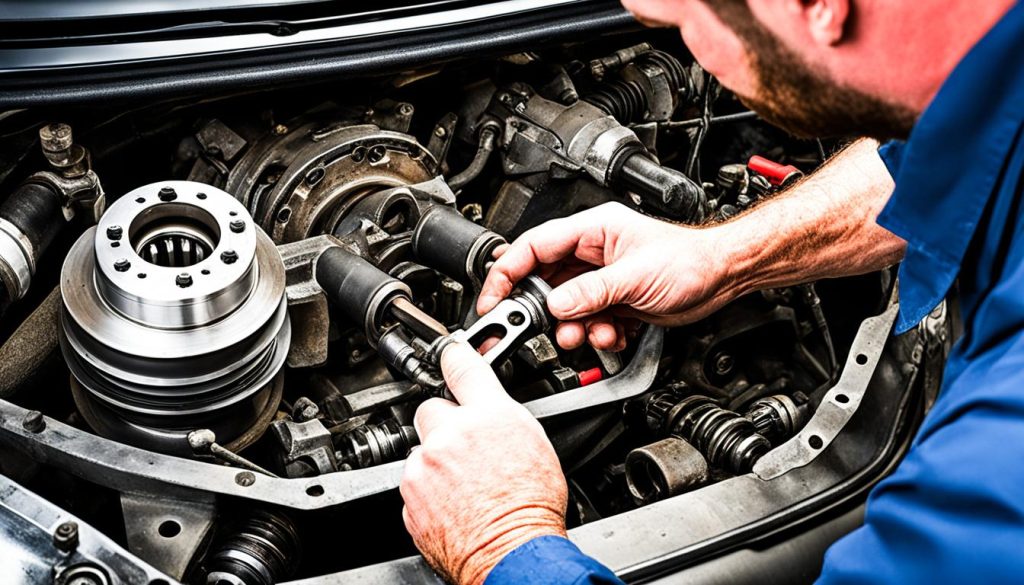
Choosing the Right Limited Slip Differential Conversion Kit
When you decide to convert an open differential to limited slip, selecting a high-quality conversion kit is crucial. Renowned brands such as Eaton Truetrac and Traction Concepts LSD Conversions provide kits that are praised for their reliability and performance. It’s important to choose a kit that matches your vehicle’s make, model, and differential specifications to guarantee a smooth and effective upgrade.
Key Considerations Before Starting the Conversion Process
Embarking on a limited slip differential conversion isn’t a decision to take lightly. There are several factors to think about beforehand:
- Verify Kit Compatibility: Double-check that the chosen kit fits your vehicle’s particular differential model.
- Budget the Conversion: Consider the cost for both the conversion kit and the potential labor fees.
- Mechanical Aptitude: Assess your skill level if you plan on attempting a DIY installation.
Understanding these key factors will help you prepare for a successful conversion and ensure you don’t encounter unforeseen issues along the way.
DIY Conversion vs Professional Installation
While a do-it-yourself conversion might be tempting for the automotive enthusiast, it requires a substantial amount of mechanical knowledge and skill. If you’re not completely confident in your abilities, professional installation by a specialized 4X4 or axle shop is highly recommended. Experts will handle the nuances of the conversion, providing you with peace of mind and the assurance of a job well done. Remember, an expertly installed open differential conversion kit can mean the difference between an optimized driving experience and a costly mistake.
Ultimately, a limited slip differential conversion allows for greater control and stability across various surfaces, ensuring a significant enhancement to your vehicle performance. With the right preparation and knowledge, you can make an informed choice between undertaking the conversion yourself or leaving it in the hands of seasoned professionals.
Maximizing Performance: Additional Upgrades to Consider
After successfully completing a differential upgrade, you might be pondering what other enhancements could further refine your vehicle’s performance. If you’ve mastered how to convert open differential to limited slip, it’s now time to explore additional performance-boosting options that work hand-in-hand with your new open differential conversion kit.

Assessing Gear Ratios: When to Switch from 3.73 to 4.10
Assessing and modifying gear ratios can be a significant move. This change is especially pertinent if you’re looking for more low-end torque for heavy-duty towing or quicker acceleration. It’s not just about speed; a switch to a 4.10 gear ratio can also mean better vehicle control and efficiency in power delivery during those demanding hauls or climbs.
Incorporating a Locker Feature: Pros and Cons
Incorporation of a locker feature to your differential can revolutionize your driving experience, especially off-road. The ability to lock both wheels on an axle to move at the same speed grants exceptional traction in challenging terrains. However, it’s essential to weigh this option carefully, as it can alter your vehicle’s handling on regular roads and may require an experienced approach to maneuvering, particularly in adverse weather conditions.
Long-Term Maintenance for Optimal Functioning of Your New LSD
Regular maintenance is the keystone for ensuring your newly installed limited slip differential performs to its utmost capability. This means periodic checks, prompt adjustments related to wear and tear, and ensuring proper lubrication. The durability of your LSD greatly depends on these post-installation practices, especially if your vehicle consistently endures high-performance demands or operates in harsh driving environments.
Avoiding Pitfalls: Insurance and Legal Considerations
If you’re contemplating a differential modification, such as a limited slip differential installation, it’s essential to keep in mind not just the mechanical aspects but also the insurance and legal implications of such an upgrade. It may seem like a detail to overlook, but your diligence in this matter can save you from future headaches. Most insurance companies might not delve into the specifics of your vehicle’s differential type, but transparency is crucial. By proactively informing your insurance provider about how to convert an open differential to limited slip, you help maintain the integrity of your coverage.
Moreover, legal considerations cannot be ignored. Depending on where you reside, there might be specific regulations regarding vehicle modifications. The installation of a limited slip differential may seem purely performance-related, yet it could have broader implications within local vehicular guidelines. To navigate these waters safely, seeking advice from professionals with expertise in automotive law or consulting with local authorities can provide clarity. This measure ensures that your vehicle not only performs better but also complies with all the requisite standards and regulations.
Ultimately, your transition from an open differential to limited slip should be a matter of pride and improved vehicular function, not a source of unforeseen legal or insurance issues. Pay attention to the details, do thorough research, and keep communication lines open with professionals who can aid you along this journey. With the right approach, your differential upgrade can be a seamless enhancement to your driving experience.
FAQ
What is an Open Differential?
An open differential is a type of gearbox that allows each of the two wheels on an axle to rotate at different speeds, which is particularly useful for cornering. It’s the standard differential setup in many vehicles.
What are the Benefits of Upgrading to a Limited Slip Differential?
Updating to a limited slip differential (LSD) can significantly improve traction and control, especially on slippery surfaces. It reduces wheel spin, provides better handling, and is beneficial for vehicles used in various conditions, including daily driving, off-roading, and track racing.
Can You Easily Dispel Myths Around Differential Conversion?
Yes! Contrary to some misconceptions, converting an open differential to an LSD is a feasible upgrade that doesn’t typically affect your insurance coverage. It can be done with the right tools, parts, and expertise.
How Can I Tell if My Vehicle is a Good Candidate for a Differential Upgrade?
To determine if your vehicle is suitable for an open differential to limited slip conversion, you should consider its make, model, and the driving conditions it usually encounters. Most modern vehicles are ready candidates for this enhancement, which promoters better handling and driving experience.
How Do You Choose the Right Limited Slip Differential Conversion Kit?
Choosing the right LSD conversion kit involves checking for compatibility with your vehicle’s make, model, and differential type. Options include reputable brands like the Eaton Truetrac and Traction Concepts LSD Conversions.
What Should You Consider Before Starting the Conversion Process?
Before starting the conversion, consider the cost of parts and labor, whether you’re undertaking the modification yourself, and your mechanical skill level. Also, weigh the potential benefits against the investment to ensure it aligns with your performance goals.
Is it Better to Perform a DIY Conversion or Seek Professional Installation?
If you have the necessary mechanical expertise and tools, you may opt for a DIY installation. However, for assurance of proper fit and operation, it’s generally advisable to seek professional installation at a 4X4 shop or a specialty axle shop.
What Additional Upgrades Should Be Considered for Maximizing Performance?
Besides an LSD conversion, consider assessing and possibly changing your vehicle’s gear ratios for improved towing or acceleration. Additionally, incorporating a locker feature may benefit gaining extra traction in rigorous off-road conditions, albeit with trade-offs in handling on slippery roads.
When Should You Switch from 3.73 to 4.10 Gear Ratios?
You might switch to 4.10 gear ratios from 3.73 if you’re looking to enhance acceleration or if your vehicle is frequently used for heavy towing. This modification can improve overall performance but should be evaluated in the context of your specific use-case.
What are the Pros and Cons of Incorporating a Locker Feature?
The major advantage of having a locker feature is the ability to lock the differential, improving traction under challenging conditions. The downside is that lockers can affect your vehicle’s handling, especially on slippery surfaces, so they should be used wisely.
What Does Long-Term Maintenance Entail for Your New LSD?
Long-term maintenance for your LSD includes regular inspections, adjustments based on wear, and keeping up with manufacturer-recommended service intervals. These practices are especially important if the vehicle is used in performance or harsh driving conditions to maintain optimal functionality.
What are the Insurance and Legal Considerations to Keep in Mind When Upgrading Your Differential?
When converting your open differential to a limited slip differential, inform your insurance provider to ensure continued coverage. Legal considerations may also arise, as some jurisdictions have specific laws regarding vehicle modifications. Always do thorough research or consult with a professional to ensure compliance.

